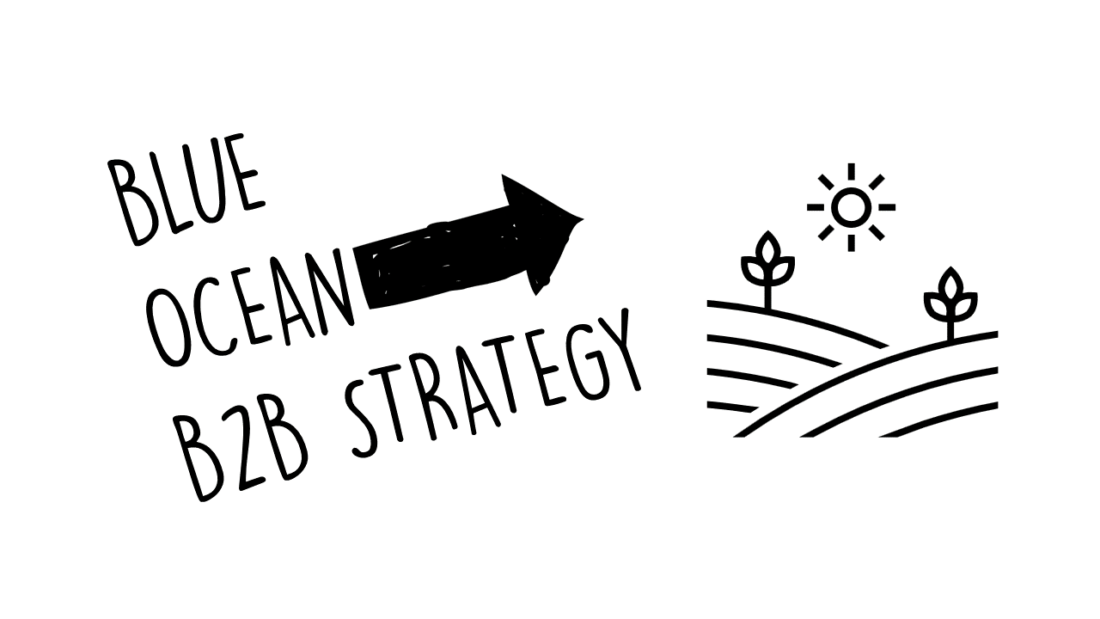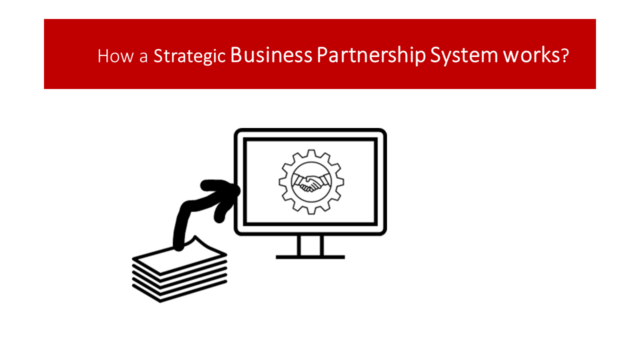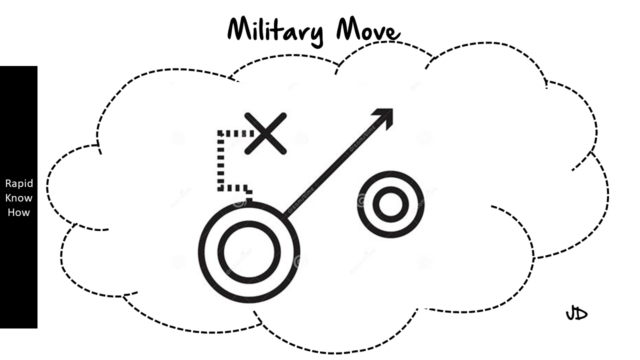Introduction
The Blue Ocean Strategy is a concept that has gained significant attention in recent years, particularly in the manufacturing industry. This strategy offers a new approach for manufacturers to differentiate themselves from competitors and create uncontested market spaces. In this article, we will explore the Blue Ocean Strategy in depth, understanding its definition, how it differs from traditional competitive strategies, and why it is important for manufacturers to adopt this approach.
Understanding the Blue Ocean Strategy: A New Approach for Manufacturers
The Blue Ocean Strategy is a business strategy that focuses on creating new market spaces rather than competing in existing ones. It was first introduced by W. Chan Kim and Renée Mauborgne in their book “Blue Ocean Strategy: How to Create Uncontested Market Space and Make the Competition Irrelevant.” The authors argue that instead of battling it out in the “red ocean” of intense competition, manufacturers should seek out unexplored “blue oceans” where they can thrive.
This strategy differs from traditional competitive strategies, which focus on beating competitors in existing markets. Instead of trying to outperform rivals, the Blue Ocean Strategy encourages manufacturers to make competition irrelevant by creating a unique value proposition that attracts new customers. By offering something different and innovative, manufacturers can tap into unmet customer needs and create their own market space.
For manufacturers, adopting the Blue Ocean Strategy is crucial for long-term success. In today’s highly competitive marketplace, standing out from the crowd is essential. By creating a blue ocean, manufacturers can differentiate themselves from competitors and establish a unique position in the market. This not only leads to increased market share and profitability but also reduces competition and increases customer loyalty.
The Shift from Red to Blue: Manufacturers’ Journey towards Competitive Advantage
Manufacturers face numerous challenges in the red ocean of intense competition. In this crowded marketplace, it becomes increasingly difficult to differentiate products or services, leading to price wars and shrinking profit margins. Manufacturers often find themselves caught in a cycle of trying to outperform competitors, which can be exhausting and unsustainable in the long run.
To achieve sustainable competitive advantage, manufacturers need to shift towards the blue ocean. By creating uncontested market spaces, manufacturers can break free from the constraints of competition and focus on delivering unique value to customers. This shift requires a mindset change and a willingness to challenge industry norms and conventions.
Several manufacturers have successfully made this shift and reaped the benefits of the blue ocean strategy. One such example is Tesla, the electric car manufacturer. By entering the automotive industry with a focus on electric vehicles, Tesla created a blue ocean for itself. The company differentiated itself from traditional car manufacturers by offering innovative technology, superior performance, and a commitment to sustainability. As a result, Tesla has gained a loyal customer base and has become a leader in the electric vehicle market.
Breaking Free from the Red Ocean: Exploring the Benefits of Blue Ocean Strategy
Adopting the Blue Ocean Strategy offers numerous benefits for manufacturers. Firstly, it allows manufacturers to increase their market share and profitability. By creating new market spaces, manufacturers can attract new customers who are not currently being served by existing products or services. This leads to increased sales and revenue for the company.
Secondly, the Blue Ocean Strategy reduces competition for manufacturers. In the red ocean of intense competition, manufacturers often find themselves engaged in price wars and battling for market share. By creating a blue ocean, manufacturers can differentiate themselves from competitors and reduce the need for aggressive price competition. This not only leads to higher profit margins but also increases customer loyalty as customers are willing to pay a premium for unique value.
Lastly, adopting the Blue Ocean Strategy allows manufacturers to focus on delivering unique value to customers. By understanding unmet customer needs and creating innovative products or services to meet them, manufacturers can establish themselves as leaders in their chosen market space. This not only attracts new customers but also fosters customer loyalty and advocacy, leading to long-term success for the company.
Innovating in Uncharted Waters: How Manufacturers are Creating New Market Spaces
Manufacturers who have successfully adopted the Blue Ocean Strategy have created new market spaces by identifying untapped customer needs and developing innovative products or services to meet them. One such example is Dyson, the vacuum cleaner manufacturer. Dyson identified the frustration customers had with traditional vacuum cleaners, such as loss of suction and the need for bags. By developing bagless vacuum cleaners with superior suction power, Dyson created a blue ocean for itself. The company differentiated itself from competitors and attracted customers who were looking for a more efficient and convenient cleaning solution.
Continuous innovation is crucial in the blue ocean strategy. Manufacturers must constantly seek out new opportunities and adapt to changing customer needs and preferences. This requires a culture of innovation within the organization, where employees are encouraged to think outside the box and challenge industry norms. By staying ahead of the curve and continuously innovating, manufacturers can maintain their competitive advantage in the blue ocean.
Blue Ocean Strategy in Manufacturing: A Framework for Success
The Blue Ocean Strategy can be implemented using a framework known as the four actions framework. This framework consists of four key questions that manufacturers need to ask themselves:
1. Which factors should be eliminated?
2. Which factors should be reduced?
3. Which factors should be raised?
4. Which factors should be created?
By answering these questions, manufacturers can identify areas where they can differentiate themselves from competitors and create unique value for customers.
One example of a manufacturer that has successfully implemented the Blue Ocean Strategy using this framework is Cirque du Soleil, the entertainment company. Cirque du Soleil eliminated traditional elements of circus performances, such as animal acts and star performers, which were costly and difficult to differentiate. They reduced the emphasis on individual acts and instead focused on creating a cohesive and immersive experience for the audience. They raised the level of artistic and acrobatic performances, creating a new form of entertainment that appealed to a broader audience. Lastly, they created a fusion of circus and theater, combining elements from both to create a unique and innovative experience.
Embracing Differentiation: How Manufacturers Stand Out in the Blue Ocean
Differentiation is key in the Blue Ocean Strategy. Manufacturers must find ways to stand out from competitors and offer something unique to customers. This can be achieved through various means, such as product design, features, quality, customer service, or pricing.
One example of a manufacturer that has successfully differentiated itself in the blue ocean is Apple. Apple revolutionized the smartphone industry with the introduction of the iPhone. By focusing on sleek design, user-friendly interface, and seamless integration with other Apple products, Apple differentiated itself from competitors and created a loyal customer base. The company continues to innovate and differentiate itself through features such as Face ID, Animoji, and augmented reality capabilities.
Manufacturers can also differentiate themselves by targeting specific customer segments or niches. By understanding the needs and preferences of a particular group of customers, manufacturers can tailor their products or services to meet those needs effectively. This allows manufacturers to create a loyal customer base and establish themselves as leaders in their chosen market space.
The Power of Value Innovation: Manufacturers’ Key to Blue Ocean Success
Value innovation is a crucial element of the Blue Ocean Strategy. It involves creating value for customers while simultaneously reducing costs for the company. By offering unique value that customers are willing to pay for, manufacturers can command higher prices and increase profitability.
One example of a manufacturer that has successfully implemented value innovation in the blue ocean is IKEA, the furniture retailer. IKEA offers affordable furniture with modern design and functionality. By focusing on flat-pack furniture that customers can assemble themselves, IKEA reduces manufacturing and transportation costs, allowing them to offer lower prices to customers. This value innovation has made IKEA a leader in the furniture industry and has attracted a loyal customer base.
Manufacturers can achieve value innovation by rethinking their value chain and identifying areas where costs can be reduced without compromising on quality or customer experience. By streamlining operations, optimizing processes, and leveraging technology, manufacturers can create value for customers while reducing costs, leading to increased profitability.
Navigating the Blue Ocean: Strategies for Manufacturers to Stay Ahead
To stay ahead in the blue ocean, manufacturers need to adopt strategies that allow them to navigate the changing market landscape effectively. Continuous market research and customer feedback are crucial in understanding evolving customer needs and preferences. By staying connected with customers and gathering insights, manufacturers can identify new opportunities and adapt their strategies accordingly.
Flexibility and adaptability are also essential in the blue ocean. Manufacturers must be willing to embrace change and adjust their strategies as needed. This requires a culture of agility within the organization, where employees are empowered to take risks and experiment with new ideas. By being flexible and adaptable, manufacturers can respond quickly to market changes and stay ahead of competitors.
From Competition to Collaboration: Manufacturers’ Approach to Blue Ocean Strategy
Collaboration is an important aspect of the Blue Ocean Strategy. Manufacturers can collaborate with suppliers, customers, and other stakeholders to create value and differentiate themselves from competitors. By working together, manufacturers can leverage each other’s strengths and resources, leading to mutual benefits.
One example of manufacturers embracing collaboration in the blue ocean is the automotive industry’s shift towards electric vehicles. Traditional car manufacturers are collaborating with technology companies and battery manufacturers to develop electric vehicles that meet customer needs for sustainability and efficiency. By working together, these manufacturers are creating a new market space for electric vehicles and challenging the dominance of traditional gasoline-powered cars.
Collaboration also allows manufacturers to access new markets or customer segments that they may not have been able to reach on their own. By partnering with other companies or organizations, manufacturers can expand their reach and tap into new opportunities for growth.
Blue Ocean Thinking: Transforming the Manufacturing Landscape
The Blue Ocean Strategy is transforming the manufacturing industry by challenging traditional practices and encouraging innovation. Manufacturers are no longer limited to competing in crowded marketplaces but can create their own market spaces where they can thrive. This shift towards the blue ocean is driving manufacturers to think differently and embrace change.
The future of the Blue Ocean Strategy in the manufacturing landscape looks promising. As competition continues to intensify, manufacturers will need to find new ways to differentiate themselves and create unique value for customers. The Blue Ocean Strategy offers a framework for manufacturers to do just that, allowing them to stay ahead of the curve and achieve long-term success.
Conclusion
In conclusion, the Blue Ocean Strategy offers a new approach for manufacturers to differentiate themselves from competitors and create uncontested market spaces. By adopting this strategy, manufacturers can break free from the constraints of intense competition and focus on delivering unique value to customers. The benefits of the Blue Ocean Strategy include increased market share and profitability, reduced competition, and increased customer loyalty.
Manufacturers who have successfully implemented the Blue Ocean Strategy have created new market spaces by identifying untapped customer needs and developing innovative products or services to meet them. Continuous innovation is crucial in the blue ocean, as manufacturers must constantly adapt to changing customer needs and preferences.
Differentiation and value innovation are key elements of the Blue Ocean Strategy. Manufacturers must find ways to stand out from competitors and offer unique value that customers are willing to pay for. By creating value for customers while reducing costs, manufacturers can increase profitability and achieve sustainable competitive advantage.
To stay ahead in the blue ocean, manufacturers need to adopt strategies that allow them to navigate the changing market landscape effectively. This includes continuous market research, customer feedback, flexibility, adaptability, and collaboration with suppliers, customers, and other stakeholders.
The Blue Ocean Strategy is transforming the manufacturing industry by challenging traditional practices and encouraging innovation. Manufacturers who embrace this strategy have the opportunity to transform their businesses and achieve long-term success in the ever-evolving marketplace.




